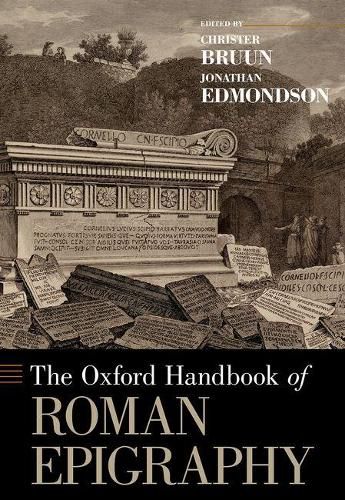Readings Newsletter
Become a Readings Member to make your shopping experience even easier.
Sign in or sign up for free!
You’re not far away from qualifying for FREE standard shipping within Australia
You’ve qualified for FREE standard shipping within Australia
The cart is loading…






Epigraphy, or the study of inscriptions, is critical for anyone seeking to understand the Roman world, whether they regard themselves as literary scholars, historians, archaeologists, anthropologists, religious scholars or work in a field that touches on the Roman world from c. 500 BCE to 500 CE and beyond. The Oxford Handbook of Roman Epigraphy is the fullest collection of scholarship on the study and history of Latin epigraphy produced to date. Rather that just a collection of inscriptions, however, this volume seeks to show why inscriptions matter and demonstrate to classicists and ancient historians how to work with the sources. To that end, the 35 chapters, written by senior and rising scholars in Roman history, classics, and epigraphy, cover everything from typograph to the importance of inscriptions for understanding many aspects of Roman culture, from Roman public life, to slavery, to the roles and lives of women, to the military, and to life in the provinces. Students and scholars alike will find the Handbook a crritical tool for expanding their knowledge of the Roman world.
$9.00 standard shipping within Australia
FREE standard shipping within Australia for orders over $100.00
Express & International shipping calculated at checkout
Epigraphy, or the study of inscriptions, is critical for anyone seeking to understand the Roman world, whether they regard themselves as literary scholars, historians, archaeologists, anthropologists, religious scholars or work in a field that touches on the Roman world from c. 500 BCE to 500 CE and beyond. The Oxford Handbook of Roman Epigraphy is the fullest collection of scholarship on the study and history of Latin epigraphy produced to date. Rather that just a collection of inscriptions, however, this volume seeks to show why inscriptions matter and demonstrate to classicists and ancient historians how to work with the sources. To that end, the 35 chapters, written by senior and rising scholars in Roman history, classics, and epigraphy, cover everything from typograph to the importance of inscriptions for understanding many aspects of Roman culture, from Roman public life, to slavery, to the roles and lives of women, to the military, and to life in the provinces. Students and scholars alike will find the Handbook a crritical tool for expanding their knowledge of the Roman world.